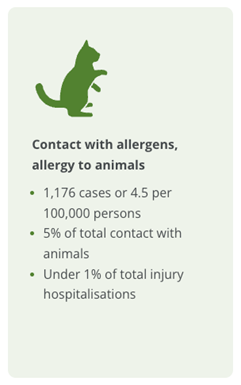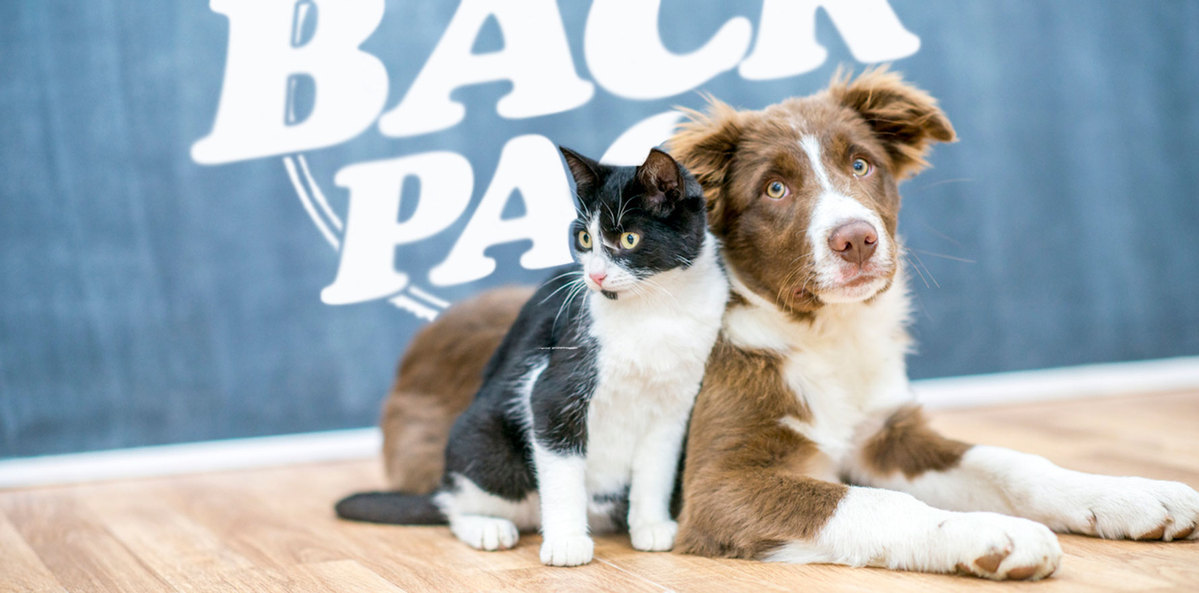Dogs and cats put more people in hospital than any of our more notorious baddies.
Australia is famous abroad for our forbidding array of venomous animals, which most Australians will never encounter and which are far less likely to kill or damage us than the sunshine we’re so envied for.
It’s funny to read the AIHW report out today that quantifies the burden of hospitalisation due to animal contact, which finds Australians are 6.6 times as likely to be laid out by non-venomous as venomous animals, with more than half such hospitalisations caused by common pets.
Around 540 people were nipped by venomous snakes and lizards, 26 were “bitten or struck by crocodile or alligator” and lived long enough to be put in hospital, and 1829 people were “bitten or crushed by other reptile” (the mind boggles).
Venomous marine animals (302 cases) beat non-venomous marine animals (223), and both were beaten by spiders (474).
The authors even note that “injuries caused by venomous animals are likely to be perceived as more serious and hence over-represented in this report”.
In 2021-22 there were almost 24,000 hospitalisations due to animal contact, a steep increase from just over 15,000 in 2012.
Of these only 5000 were due to livestock, of which horses were the frontrunners. Women were twice as likely to be injured as males, despite probably being less represented in the farm hand population.
Women were also more likely to be injured by their dog or cat – the culprits who collectively caused the most hospitalisations. Expressed as crude population rates, they put 47.5 per 100,000 people in hospital in 2021-22 compared with 18.9 in 2011-12.
This huge increase simply matches the increase in pet ownership, which grew especially fast during the pandemic, bringing a 10% jump in animal-related hospital stays between 2019-20 and 2020-21.

Surprisingly “3226 cases were identified where the external cause of injury was a transport accident involving the rider or occupant of an animal drawn vehicle: these represent about 14% of total animal-related injury hospitalisations.”
Lor lumme guvnor, watch out for those ’ansom cabs!
The scope is limited to hospital stays and does not count emergency visits (citing unreliable data) – which is a shame, as that would add another intriguing dimension. Such as the late-night ED trips when your usually placid and loving cat has without provocation slit your eyelid open with a claw – as happened to a friend of the Back Page, not to us. Bonnie just wouldn’t dream of such a thing. Look at her. And we keep her claws trimmed.

In fact, cats don’t even get a look-in with regards to injuries, though this graphic strongly implicates them in allergy presentations.

Despite the popular belief that all cats want to murder their owners, of the 24,000 hospitalisations, 9500 or 40% were caused by dogs. (Coincidentally 40% of Australian households now include a dog.) Most of these injuries were open wounds. This still represents less than 2% of all injury hospitalisations.
The report doesn’t include how many cat owners who died of other causes in their homes were then eaten by their flooffy beauties, as goes that other popular belief.
AIHW spokeswoman Dr Sarah Ahmed was quick to comment; “Although owning a pet comes with a risk of injury, research has shown that interactions between humans and animals can provide benefits to our health and wellbeing.”
Totes worth the occasional goring, in our opinion.
Send mugshots of your darlings to penny@medicalrepublic.com.au.


